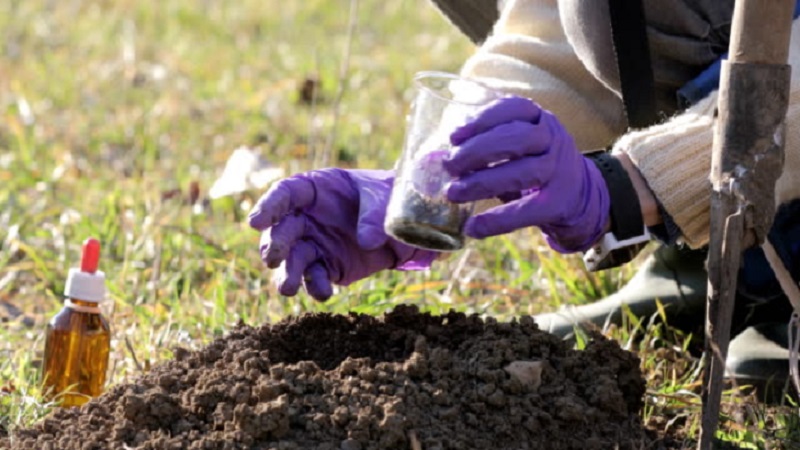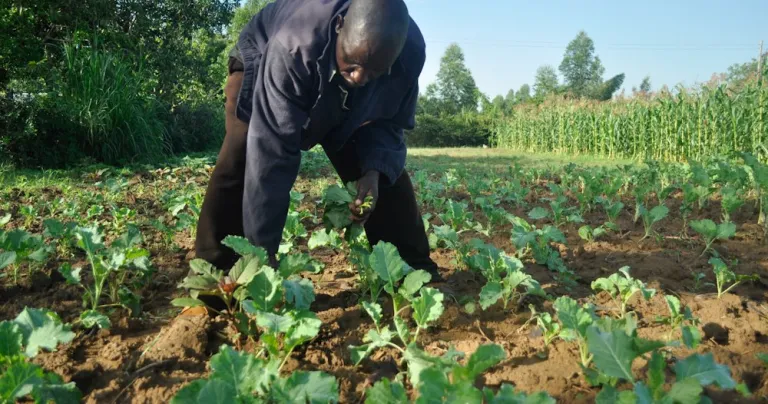Testing your soil pH is crucial if you want to avoid losses. Your soil pH is key to understanding if essential nutrients will be available to the roots of your plants. Plants can only access these nutrients if the soil pH is within a certain range. If it isn’t, your crops will never make it no matter how much fertilizer you add. Let’s go back to school for those that don’t know what pH is.
- What exactly is Soil pH?
pH is short for “potentia hydrogenii” – the power of hydrogen. It is a measure of the number of hydrogen ions present in a substance. For a farmer, pH is a measure of how alkaline (sweet) or acidic (sour) something is. In this case, you should use it to test our soil. However, the pH of the water you use or the pH of rain water can also affect the quality of your soil.
The pH measurement is a logarithmic scale that goes from 1 to 14 with a measurement less than 7 being acidic, 7 neutral, and a measurement higher than 7 alkaline. Because it is a logarithmic scale, each value increases by a factor of 10. For example, 9 is 10 times more alkaline than 8 and 4 is 10 times more acidic than 5. Pure water usually measures a neutral 7 and cow’s milk slightly acidic at 6.5. Both tomatoes and Mosi measure 4.5. Stomach acid is 2.0 and lemons are very acidic at 2.5. Sodium bicarbonate measures 8.4, lime comes in at 12 and ammonia is about 11.1.
As you can see, acidity or alkalinity all depend on what the substance is interacting with. In fact, most plants adapt to any soil pH in the range of 6.0 to 7.5, while some plants prefer distinct soil types.

- Weeds Can Even Give You a Clue about the pH of Your Soil
Weed plantain and dandelions increase rapidly in number in acidic soil. Queen Anne’s Lace, Chickweed and chicory prefer alkaline soil. It’s important to first know what you will be growing, before changing the pH of your soil. Here’s a simple test you can do on your own.
- DIY Soil pH Test
Alkalinity Test
- Take a soil sample from 10 to 15cm below the surface of your soil. If you have small field, try to mix soil from at least 3 different spots. If your field is large, it’s best to separately test several samples.
- Remove any sticks, stones, or other foreign items and break up any large clumps of soil.
- Place 1 cup of soil into a clean, glass container and mix it with water to turn it into mud.
- Then, add a 1/2 cup of vinegar and slightly stir.
If the soil foams, fizzes or bubbles, then your soil is alkaline. If it doesn’t, test it for acidity.
Acidity Test
- Take a soil sample from 10 to 15cm below the surface of your soil. Do not use the same soil you did an alkaline test on.
- Remove any sticks, stones, or other foreign items and break up any large clumps of soil.
- Place 1 cup of soil into a clean, glass container and mix it with water to turn it into mud.
- Add a 1/2 cup of baking soda and stir.
If the soil foams, fizzes or bubbles, then your soil is acidic. If neither of the tests produce much of an effect, your soil probably has a neutral pH.
These tests can help you determine the pH of your soil. However, for a precise measurement, you will need to either send a soil sample out to a lab for testing or buy a pH soil testing kit. Check with your seed supplier for soil testing kits.
You can make acidic soil neutral by adding lime and you can correct alkaline soil by adding sulfur. The quantity all depends on the actual correction needed, and this is where you need an accurate test.





